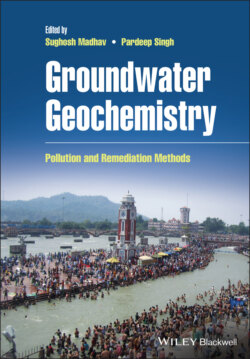Читать книгу Groundwater Geochemistry - Группа авторов - Страница 44
2.2.2 Anthropogenic Sources
ОглавлениеIn many developing countries as well as developed countries, the fluoride concentration present in the environment has been majorly altered by industrial discharge. The main sources of fluoride input into the environment via anthropogenic activities are the aluminum and zinc industry, coal‐burning, brick/clay burning, steel production, oil refining, chemical production, uranium trifluoride, magnesium smelting, ceramic glass and uranium hexafluoride production, enamel manufacturing, and fluoride‐containing fertilizers or pesticide industries (Sujatha 2003). Discharge from industries heavily pollutes the soil and water, as well as vegetation cover around the industry and far away from it. Other than industrial emissions, agriculture runoffs having fluoride‐containing fumigants, fertilizers, and pesticides are some of the other predominant causes of fluoride pollution (Kundu and Mandal 2009; Borah and Saikia 2011). Industries involving coal burning pollute the atmosphere in a small area, and the extent of the pollution depends on the origin and type of coal. It has been estimated that burning of biomass releases 76 Gg fluoride into the air annually (Jayarathne et al. 2014).
